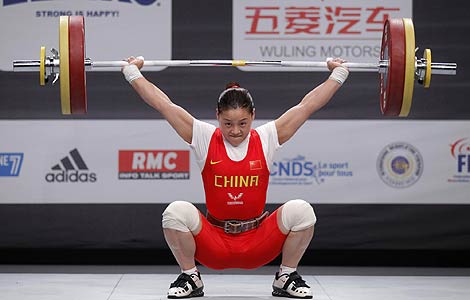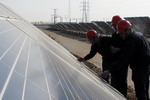Steel project illustrates "win-win" model overseas
Updated: 2011-11-08 17:23
(Xinhua)
|
|||||||||||
BEIJING - A Chinese project worth $1 billion has landed in the American state of Texas and has received a warm welcome from local government.
The project sets a fine model of Chinese companies' internationalization under a "win-win" strategy.
Financed by the Tianjin Pipe Corp, the jumbo-sized project will produce up to 500,000 metric tons of seamless steel pipe, marking China's largest single manufacturing investment in the United States.
Chinese steel products have long been a target of anti-dumping or anti-subsidy investigations. By opening overseas operations, Chinese enterprises hope to legally circumvent the unfair treatment and accelerate their internationalization.
However, setting up overseas' branches has never been easy for Chinese steel producers.
A cooperation plan last year between a Chinese steel company and its American partner was interrupted by some 50 members of the US Congressional steel caucus.
The congressmen requested that the US government thoroughly investigate the joint venture and said the company "threatens American jobs and our national unity."
Under such an unfavorable investment environment, Tianjin Pipe Corp still managed to launch its US operation. The steel giants offered something unresistable.
Altogether 600 jobs will be created at the Texas plant with an annual payroll of about 18 million dollars. It is estimated that the plant's 10-year economic impact will be $2.7 billion, according to a study by Impact Data Source of Austin, a Texas-based consulting firm.
The project is "exciting," Danny Nguyen, a Missouri City, Texas, council member told Xinhua.
Since the value of the property will go up after the investment, "so taxes and tax revenue will be generated for the local government," he said. "It's good for the local government, good for the city and good for the country."
The huge benefits to the local economy have attracted numerous bidders to compete for the project. More than 30 locations were in the first round of selection. After months of painstaking study, San Patricio County was picked to hold the project.
San Patricio, located on the western Gulf of Mexico near Corpus Christi in south Texas, stood out for a reason.
Roland Mower, president and CEO of the Corpus Christi Regional Economic Development Corp, said he could not remember how many meetings they had convened on the Tianjin Pipe Corp project.
The body arranged about 10 to 12 groups of people from government, business, communities and other organizations to tout their advantages to the Chinese representatives, Mower said, adding that they even translated their prepared speeches into Chinese.
To gain a competitive edge over other bidders, San Patricio also invited a number of experts on Chinese culture to teach their negotiators some business practices suitable to Chinese customs.
Receiving a zealous welcome in the United States, the Chinese steel producer did not lose its head. Zhang Wenfeng, deputy general manager of Tianjin Pipe Corp, said the company fully estimated the possible risks of the project and had made a raft of plans before heading to a finalized agreement.
Mower, who has already befriended the representatives from Tianjin Pipe Corp, thought highly of their cooperation and hopes the two sides can continue their partnership for many years to come.
- China urges EU to drop aviation emission plan
- Jan-Sept overseas investment up 12.4%
- Yum! gets nod to buy Little Sheep
- Father, two sons sentenced to death for fraud
- Poly home sales tumble 39.27% in Oct
- Hainan to set up duty-free operator
- Chinese tourists to reshape global travel industry
- Reports of 800b yuan railways fund 'untrue'










